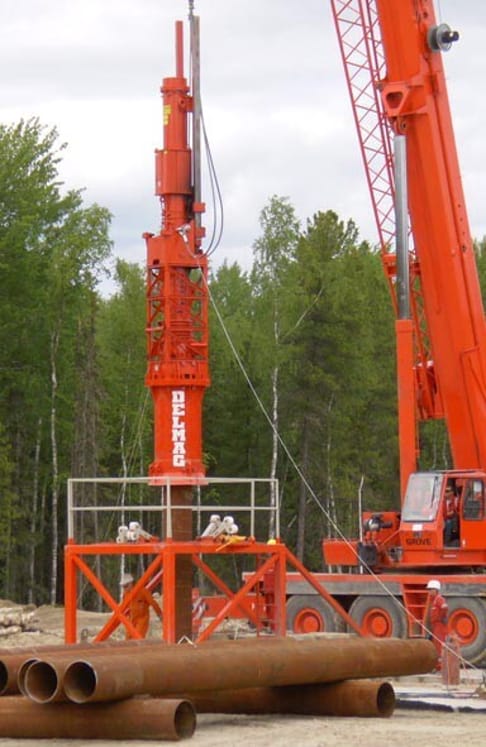Sticking with the Basics

Good friend and Atlas mentor Gary Lee shared this traditional piledriving method with us:
I can't tell which I like better:
1. The tambourine used to set the cadence, or
2. How the penetration rate increased when that last guy jumps up to increase the effective ram weight, or
3. How the whole human hammer system knew when the pile had reached the design tip elevation.
Because I’m an irredeemable nerd, I estimated the hammer energy like this:
6 guys x 65 kg/guy x 9.81 N/kg x 0.1 m stroke = 382 N/blow
That’s tiny. Absolutely miniscule. It’s about 2% of the smallest diesel hammer that Delmag can supply. And it got the job done. Sure, the piles are 80 mm square and are probably reaching a hard bearing layer, and it looks like there several per column. But that’s exactly the point: compatibility. The site and the foundation and the column loads and the available construction equipment are all compatible, part of a system that is getting the job done.
It reminded me of MacDow’s (http://www.macdow.com.au/) choice to use a drop hammer instead of a modern hydraulic hammer to drive some bridge abutment piles in American Samoa. Simpler definitely is better when working far from a source of spare parts. The drop hammer was slow. There were some frustrating days. And it got the job done at a difficult remote site.
This is a project where the design team wasn’t allowed the option of offering a locally compatible design. The funding agency for the bridge insisted that the design comply with North American design standards, which assume essentially unlimited access to the most modern construction equipment in the world. And it was MacDow’s clever and diligent engineers that translated the design, as best could be managed, back to something locally compatible. They used an ancient technology, basically one step up from the “six guys and a tambourine” method, to bridge the gap between our developed-world pile bearing requirements and the actual site location.
The lesson here, the one that amazes me with its rich complexity, is that local engineers and builders already have a compatible system that includes architecture, building materials, construction systems, and life cycle maintenance. Our projects are best when they leverage, rather than supplant, these existing systems. Just because you don’t see a pile hammer on the island, for example, don’t assume that the local builders can’t drive piles to put a building on a soft site. Consider, at least as an alternative, aligning your designs with the local system rather than assuming the project needs you to import a crane, a pile hammer, skilled technicians, and the full logistics train stretching back to New Zealand to build something that, while better or safer, has not been necessary in the community up to the moment you got your contract.

Doug founded Atlas Geotechnical in 2004, and focuses on working for Contractors and Operators, tackling the most challenging problems.

